MBA dissertation help University of Lincoln – Lincoln Business School UK
MBA dissertation help University of Lincoln – Lincoln Business School UK
Introduction
MBA dissertation help Lincoln Business School UK. The MBA program at the University of Lincoln‘s Lincoln Business School is renowned for its comprehensive curriculum and exceptional faculty. One of the most challenging yet rewarding components of this program is the MBA dissertation. This article aims to provide detailed guidance and support to students embarking on their MBA dissertation journey at the University of Lincoln. By offering insights into the dissertation process, topic selection, research methodologies, and writing techniques, we hope to help students excel in their academic endeavors.
Understanding the MBA Dissertation
The MBA dissertation is a significant component of the MBA program, representing a culmination of the knowledge and skills acquired throughout the course. It is an opportunity for students to conduct in-depth research on a business-related topic of their choice, demonstrating their analytical and critical thinking abilities. The dissertation not only contributes to the final grade but also serves as a testament to the student’s expertise and readiness for the professional world.
Choosing the Right Topic
Selecting an appropriate and engaging topic is crucial for a successful MBA dissertation. It should be relevant to the field of business, align with the student’s interests, and have practical implications. Here are some steps to help in choosing the right topic:
- Identify Your Interests: Reflect on the subjects that intrigued you during your coursework. Choosing a topic that genuinely interests you will keep you motivated throughout the research process.
- Consult with Faculty: Leverage the expertise of your professors and advisors. They can provide valuable insights and suggest potential topics that are both interesting and feasible.
- Review Literature: Conduct a preliminary literature review to understand the existing research landscape. This will help you identify gaps in knowledge and potential areas for further exploration.
- Consider Practical Implications: Ensure that your topic has real-world relevance and can contribute to the business community. Practical implications can enhance the value of your research and make it more impactful.
Research Methodologies
Choosing the right research methodology is essential for gathering and analyzing data effectively. The methodology should align with your research question and objectives. Here are some common methodologies used in MBA dissertations:
Qualitative Research
Qualitative research is ideal for exploring complex phenomena and gaining in-depth insights. It involves collecting non-numerical data through methods such as interviews, focus groups, and case studies. Qualitative research is particularly useful for understanding behaviors, motivations, and attitudes.
Quantitative Research
Quantitative research focuses on collecting and analyzing numerical data. It involves the use of statistical tools and techniques to test hypotheses and measure variables. Surveys, experiments, and secondary data analysis are common methods used in quantitative research. This approach is suitable for studies requiring measurable and generalizable results.
Mixed-Methods Research
Mixed-methods research combines both qualitative and quantitative approaches to provide a comprehensive understanding of the research problem. It allows researchers to capitalize on the strengths of both methodologies and address their limitations. This approach is particularly beneficial when exploring multifaceted issues.
Structuring Your Dissertation
A well-structured dissertation enhances readability and ensures that your arguments are presented logically. Here is a typical structure for an MBA dissertation:
Title Page
The title page should include the title of your dissertation, your name, the name of your institution, and the submission date. It should be concise yet informative, clearly conveying the focus of your research.
Abstract
The abstract is a brief summary of your dissertation, highlighting the research question, methodology, key findings, and conclusions. It should be between 150-250 words and provide a snapshot of your study.
Table of Contents
The table of contents lists all the sections and sub-sections of your dissertation, along with their page numbers. It serves as a roadmap, guiding readers through your work.
Introduction
The introduction sets the stage for your dissertation. It should outline the research problem, objectives, and significance of your study. Providing context and background information is crucial for establishing the relevance of your research.
Literature Review
The literature review critically examines existing research related to your topic. It identifies gaps in knowledge, highlights key theories and concepts, and establishes the foundation for your study. A thorough literature review demonstrates your understanding of the research landscape.
Methodology
The methodology section details the research design, data collection methods, and data analysis techniques used in your study. It should justify your methodological choices and explain how they align with your research objectives.
Findings
The findings section presents the results of your research. It should be organized logically, using headings and subheadings to separate different themes or categories. Visual aids such as tables, graphs, and charts can enhance the clarity of your findings.
Discussion
The discussion interprets the findings in the context of your research question. It should highlight the implications of your results, discuss their relevance to existing literature, and address any limitations of your study. This section should also suggest areas for future research.
Conclusion
The conclusion summarizes the key points of your dissertation, reiterating the significance of your study and its contributions to the field. It should provide a clear and concise answer to your research question.
References
The references section lists all the sources cited in your dissertation. It should follow a consistent citation style, such as APA, MLA, or Harvard. Accurate referencing is crucial for academic integrity.
Appendices
The appendices include supplementary materials such as questionnaires, interview transcripts, and raw data. They provide additional context and support for your research.
Writing Tips
Effective writing is essential for communicating your research clearly and persuasively. Here are some tips to help you write a compelling MBA dissertation:
- Plan Your Writing: Create an outline before you start writing. This will help you organize your thoughts and ensure a logical flow of ideas.
- Be Clear and Concise: Use clear and concise language to convey your arguments. Avoid jargon and complex sentences that can confuse readers.
- Use Active Voice: Writing in the active voice makes your sentences more engaging and direct. It also helps in maintaining a clear and authoritative tone.
- Proofread and Edit: Thoroughly proofread and edit your dissertation to eliminate errors and improve clarity. Consider seeking feedback from peers or advisors.
- Cite Sources Accurately: Properly citing your sources is essential for academic integrity. Ensure that all references are accurate and consistent with the required citation style.
Conclusion: MBA dissertation help Lincoln Business School UK
The MBA dissertation is a challenging but rewarding component of the MBA program at the University of Lincoln’s Lincoln Business School. By choosing an engaging topic, employing appropriate research methodologies, and adhering to a clear structure, students can produce high-quality dissertations that contribute to the field of business. With dedication, meticulous planning, and effective writing, you can excel in your MBA dissertation and make a meaningful impact in the academic and professional world.
Thank you for read our Blog “MBA dissertation help University of Lincoln – Lincoln Business School UK”.







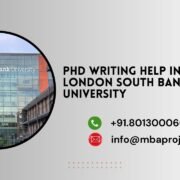
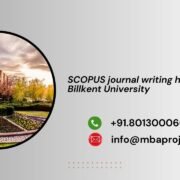

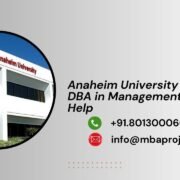
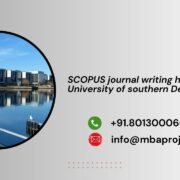
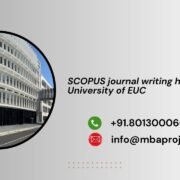
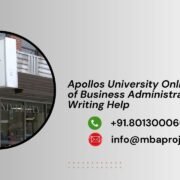


Leave a Reply
Want to join the discussion?Feel free to contribute!